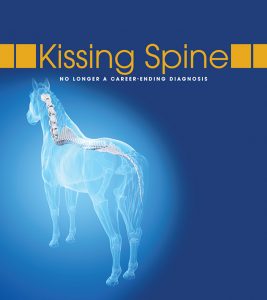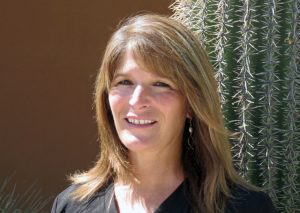paykwik al
online sportwetten
paykasa
paykwik
online sportwetten
paykasa
Kissing Spine: No Longer a Career Ending Diagnosis
Click here to read the complete article
It began as a hitch in the gelding’s get-along, so to speak. The nagging short step in his hind end persisted. Then, when he was put on a longe line in a circle, he demonstrated what horsemen describe as being “dead lame.” But when the 2007 AQHA gelding, Lopin For Hours, aka “Chevy,” straightened out, he would appear to be sound…
Already proactive with a wellness program with her vet, Stacy Dial of Vista, California, who was leasing Chevy for her daughter, Savannah, continued to dig for answers. “We x-rayed hocks, stifles, everything! We couldn’t quite figure it out,” she explains. “Then, two years ago at the AQHA Paso Robles show, he wasn’t even staying sound enough to show. So we started x-raying at the feet and went up. We found that everything looked like normal wear and tear for a 10-year-old show horse, but there was nothing to cause this.”
Then, when they started x-raying his back, they stopped. “The x-rays showed vertebrae that were overlapped and touching, and that’s what Kissing Spine looks like. He could’ve been suffering with it for years,” she says.
“Kissing Spine” refers to a condition in horses in which two or more of the spinous processes (the flanges of bone sticking up from each vertebra in the spine) are positioned so that they touch or rub against each other. Horses with Kissing Spine may develop back pain, bone cysts, arthritic changes, and other problems, according to Kentucky Equine Research.
Initially, their vet said the Dials would have to retire Chevy because his case was so severe, and they were scared. “The vet wasn’t even sure that he’d be comfortable in a pasture,” Dial explains. The diagnosis was shocking for the Dials, but they also learned that medical treatments and surgical techniques for this condition have greatly advanced over the last decade. Now, thankfully, the diagnosis doesn’t have to be career-, or life-ending.
Symptoms
As anyone with back pain might easily imagine, Kissing Spine can be agonizing, so the list of symptoms may vary greatly. They range from inconsistent lameness, to being cinchy, to poor development of the epaxial muscles associated with the vertebrae, ribs, and base of the skull.
“Clinical signs do vary from a subtle unwillingness to move forward in collection to full-out bucking,” explains C. Renee Andrea, DVM, DACVS, Board Certified Equine Surgeon at Chaparral Veterinary Medical Center in Cave Creek, Arizona, where she is Co-Owner and Chief of Surgery. Also, as the Clinical Assistant Professor for Midwestern University School of Veterinary Medicine, Andrea is well versed in treating Kissing Spine.
“I find the symptoms are very dependent on the discipline and attitude of the horse,” Andrea says. “For example, the Dressage horse will begin refusing to move forward during work and the Roping horse will reveal pain and even buck either during or after a run. All horses will show some degree of pain to palpation over the affected vertebra.”












